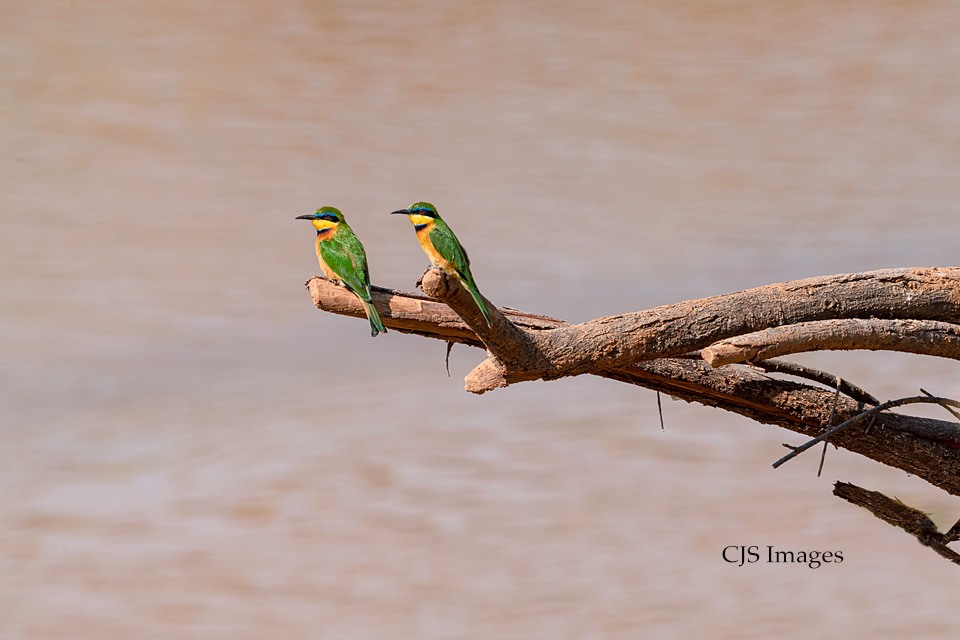More Sightings

The northern part of Kenya has a lot to offer in the way of wildlife. There are species unique to the area, a number of vulnerable or endangered species, and some that are just unique to Africa in general. In addition to the animal wildlife, there are also unique species of plants that thrive in the dry, semi-arid northern lands of Samburu. Below are just a few of the sightings from my recent visit to Samburu National Reserve.
(Please, click on the images to enlarge)
I think of the Grevy’s Zebras as psychedelic. If you stare at them for awhile their pattern seems to spin. These are the largest of the zebra species with their unusual narrow stripes and white bellies. By the way, zebras are black with white stripes in case you’ve wondered. The Grevy’s are listed as endangered with only about 2500 left in the wild mostly in southern Ethiopia and northern Kenya.
The last image is of a Beisa Oryx which is also considered an endangered species with less than 1000 in the wild. As with all of Africa’s wildlife, loss of habitat puts wildlife at risk. The Beisa Oryx is also hunted for it’s skin, horns and meat, and is one of the staples for Big Game hunters.
The East African Doum Palm Tree is one of only a few palms that branch. It has an edible fruit which I’m told tastes like gingerbread which is produced only after the tree has reached 30 years old. It has a valuable economic importance to local communities as fruit, leaves, and trunk can be used for food, shelter, weaving, furniture and even wine. Unfortunately, because of its value it has been over-harvested. Some methods of extracting the sap from the tree have also killed the trees. The number of trees has substantially declined in recent years.
I’ve caught glimpses of hares before, but not for long enough to get a shot. This African Hare gave me just a couple of seconds. It’s no wonder that they’re so skittish as they are prey for so many like the Leopard in the next image. We spent quite a bit of time looking for the elusive leopards. This was a young leopard. With the camouflage that his coat provides it’s no surprise that this was my only sighting during my days in Samburu.
Birders must be in heaven when they’re in Africa. There are so many species both local and migratory that it would take years to track them all down. The first image is of a Martial Eagle on his prey of an unfortunate Vulturine guineafowl. This large eagle with a wingspan of 6-7 feet is also endangered. His aggressiveness and the fact that he hunts from the air gives him the name of “the leopard of the air”.
The second image is a flock of Vulturine guineafowl. These are the largest of the guineafowls usually found in flocks of 2-3 dozen or more. The cobalt blue of their feathers and the bright red eyes make them oddly attractive.
The two little Blue-breasted Bee-eaters are sitting on a dead tree limb that hangs over the river hoping for an insect to fly by. There are a number of species of Bee-eaters, but I think this is one of the prettiest.
If you enjoy seeing my images, please sign up at the top of the page to be notified by email when more are posted. Thank you for joining me on my journey through Kenya! Cheryl













Edwin Cohen
12 Nov 2021Well done, as usual.
Ed
Cheryl Schneider
13 Nov 2021And, as usual, I appreciate your comments!
Hope Himel
12 Nov 2021Loved all of the photos, especially the birds. Elisa will love seeing the vultures.
Cheryl Schneider
13 Nov 2021Thank you, Hope! Still more to come. 🙂
Cheryl Schneider
13 Nov 2021As usual your pictures are a thing of beauty and wonder. It is so nice of you to share nature, beauty and the world to all of us who may not know about nature, history as you photograph it. Thank you!
Cheryl Schneider
15 Nov 2021Thank you, Cheryl! I very much appreciate your comments. 😊